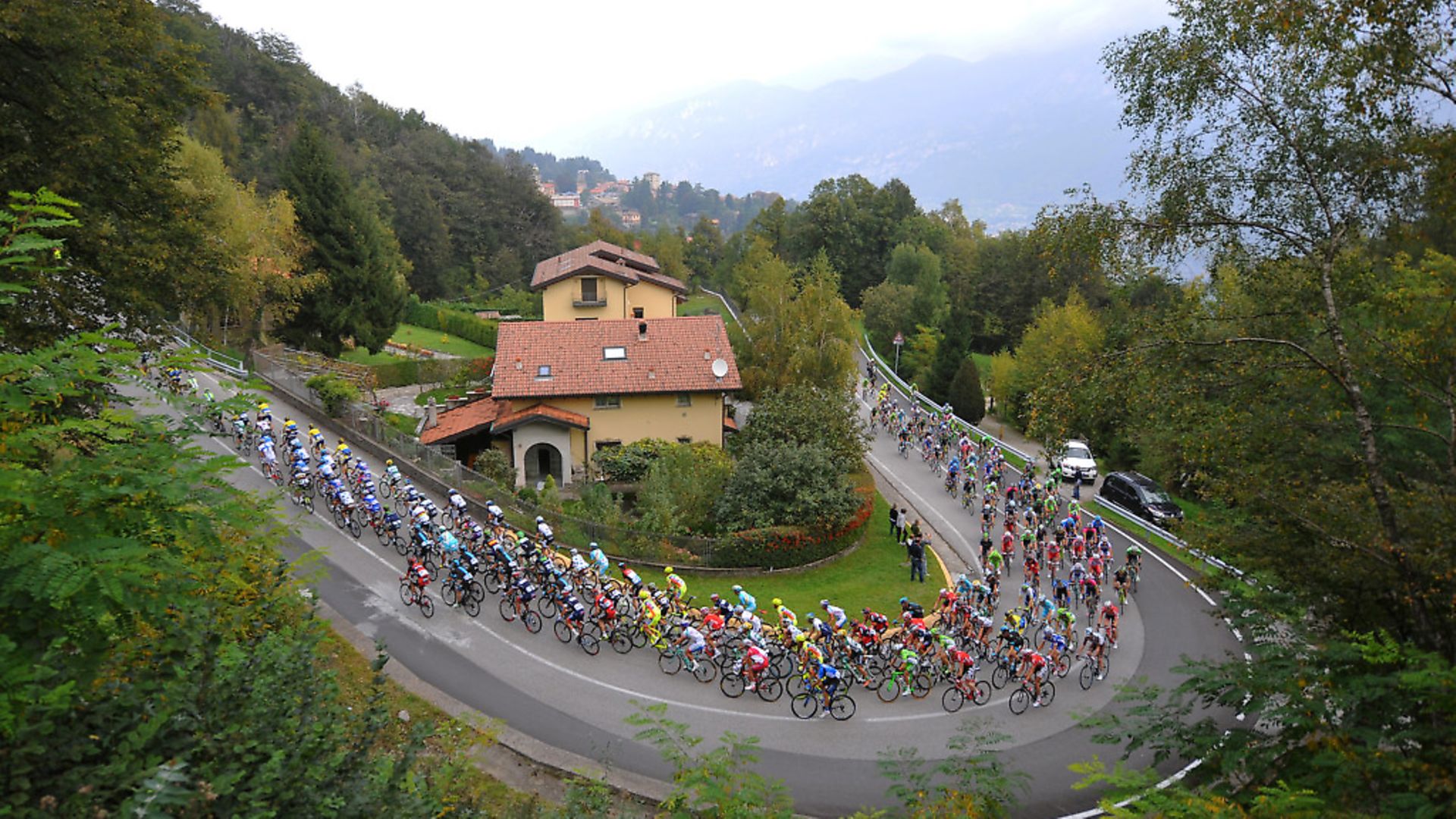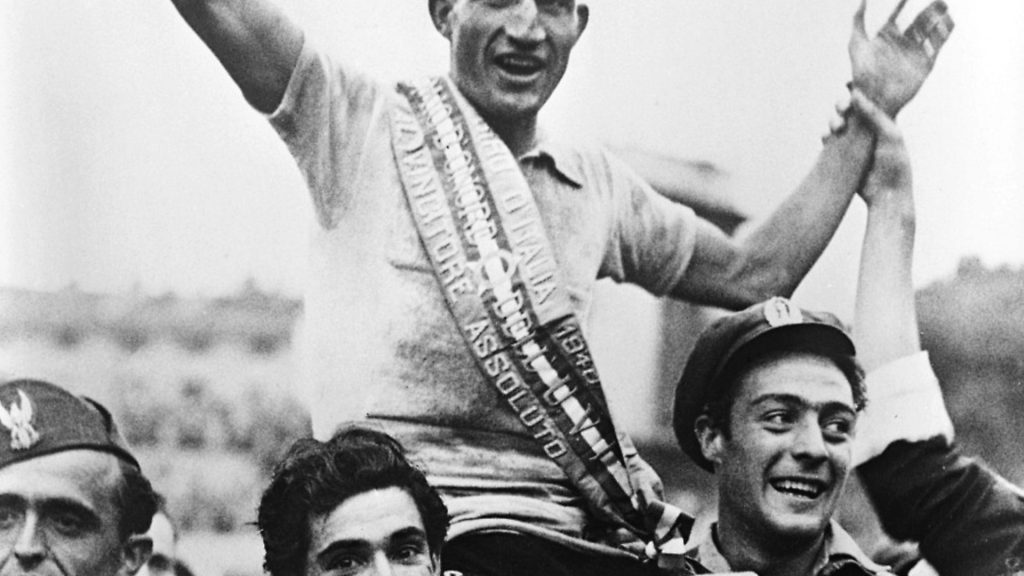
France might be home of its most famous race, but Italy is the country with cycling in its DNA. To find out why, Patrick Sawer makes a tearful pilgrimage to its shrine to the sport.

Grown men and women are likely to get a bit tearful at the sight of the Madonna del Ghisallo. Or at least I did.
Standing on top of a steep 10km climb outside the pretty lakeside town of Bellagio, in Lombardy, this tiny chapel holds a special place in the heart of Italian cycling.
And – as anyone who has seen the 1979 coming of age film Breaking Away knows – Italian cycling holds a special place in the folklore of the wider sport.
It was on the Colle di Ghisallo, the hill rising 754 metres above sea level on which the whitewashed chapel stands overlooking Lake Como, that some of the greatest names in Italian cycling have battled for glory.
Their feats are celebrated inside the chapel of the Madonna, which in 1949 was turned by its then priest, Father Ermelindo Vigano, a cycling devotee, into a shrine to the sport and all who suffer in its pursuit.
The modest chapel tells us much about cycling and the part it plays in the Italian soul.
The Madonna of Ghisallo became the protector of travellers venturing through the area following a local tradition, which had it that the Virgin Mary had appeared before the medieval count of Ghisallo to save him from highway robbers.
On the chapel’s walls are plaques and photographs placed by their families in remembrance of loved ones who have died pursuing their passion on two wheels. Alongside burns an eternal flame lit by Pope Pious XII.
The act of cycling lends itself to a very Italian Catholic concept of suffering and sacrifice for the greater goal of eternal salvation. As riders make their way up the steep climbs of the Alps and Dolomites, or even more modest hills closer to home, they undertake their own Via Crucis – the path that Jesus took to Mount Calvary carrying the heavy burden of his own cross. Labouring under the effort they turn their pedals in defiance of gravity, until they feel on the point of death itself, only to fly like angels down the other side of the mountain as they descend at speed.
Of course this laborious process of suffering to attain both physical and spiritual redemption begins all over again at the foot of the next climb. Just like mankind’s daily struggles in life.
A prayer hanging inside the chapel reminds the hundreds of visitors who struggle up the Ghisallo to this place of pilgrimage each year – Belgian, Dutch, German and, in ever growing numbers, British – of the cycle of pain and joy a bike can bring.
‘We ask you to make the bike an instrument of brotherhood and friendship which will serve to lift us closer to God,’ it reads, beneath the bikes and jerseys of past champions, including Eddy Merckx and the great Spanish rider Miguel Induráin, which hang from the walls and ceiling.
Next to the chapel stands a monument to this process of pain and redemption. And the Italians do monuments, like much else, on an operatic scale.
Not for them the quiet stoicism of a brave soldier on a British war memorial, head bowed in contemplation of his fallen comrades. Rather their figures are captured charging against impossible odds, or reaching imploringly to the skies for salvation.
So too with the statue outside the Ghisallo chapel. This depicts one cyclist on his knees, his bike a tangle of broken metal by his side, while the rider next to him crests the mountain summit, his hand raised to the heavens.
After reaching the summit myself, having puffed and panted up the road’s steep switchbacks on my hired road bike, I stood at the foot of the statue and recognised myself more in the fallen cyclist than the victor.
After all, while cycling is one of the few sports that allows the amateur to compete on the same terrain as its champions, the very roads and mountain passes featured in Le Tour de France, Il Giro d’Italia and La Vuelta de Espana – much like a pub team being allowed to play at Wembley or club players on the lawns of SW19 – pain and failure are a constant companion.
But it was the simple bronze busts next to the chapel door that almost reduced me to tears – though I concede it may have been the effort of gulping oxygen into my bursting lungs, accompanied by the crying of my aching legs, that made me so lachrymose.
One shows Fausto Coppi, who won the Giro five times and the Tour twice, earning himself the nickname Il Campionissimo.
During the 1950s Coppi, a born rebel, attracted the opprobrium of a still deeply conservatively Catholic Italy by conducting an affair with a married woman which saw the couple’s home raided by police, their relationship condemned by the Pope and Coppi jeered and spat at by spectators.
Another bust depicts Gino Bartali, who won the Giro three times and the Tour twice during a career interrupted by the Second World War. During the war and the Nazi occupation of Italy which followed the fall of Mussolini in 1943, Bartali, a devout Catholic, would use his training rides to secretly ferry documents and forged identity papers for Jews in hiding to Italian resistance cells, secreting them in the frame of his bike under the noses of the German and Fascist check-points he passed on the way.
It only emerged in recent years that Bartali also hid a Jewish family in his cellar in Florence until the liberation of the city in August 1944, saving them from certain deportation to the death camps.
Arch-rivals, Bartali and Coppi were famously photographed sharing a bottle of water as they climbed the Col du Galibier, during the 1952 Tour de France, in a touching gesture of sportsmanship – though the two riders always disputed who passed the bottle to whom and it was later claimed the ‘handover’ of the bottle had been prearranged by a sports magazine. These and other stories from cycling’s annals are lovingly retold in the museum built near the chapel (reduced entry fee if you’ve cycled there).
Among the items of memorabilia displayed inside is a collection of Maglie Rose, the pink jerseys worn by the overall leader in the Giro, dating back to 1920s when they were made of wool and the riders’ pockets were stitched on the front; the bike on which Bartali won the 1948 Giro; and a section devoted to the achievements of women cyclists.
The curator tells me they have seen a marked rise in the number of women visiting the museum in recent years, reflecting their growing importance in the sport.
But he also laments the fact it is mostly foreigners who visit today, as if Italians have turned their back on the old-fashioned virtues of cycling and what it says about their national character.
Some kilometres on from the Ghisallo is another hefty slice of Italian cycling folklore: Il Muro di Sormano, or The Wall.
This climb is so steep even the hard men of cycling thought it too much and it was dropped from the route of the autumnal Tour of Lombardy, known as the tour of the falling leaves.
I followed their example and missed The Wall out of my route through the hills and valleys and back along the lakeside road to Bellagio. There are only so many tears I could respectably shed on one ride, even in Italy.
• Patrick Sawer is a senior reporter on the Daily and Sunday Telegraph









